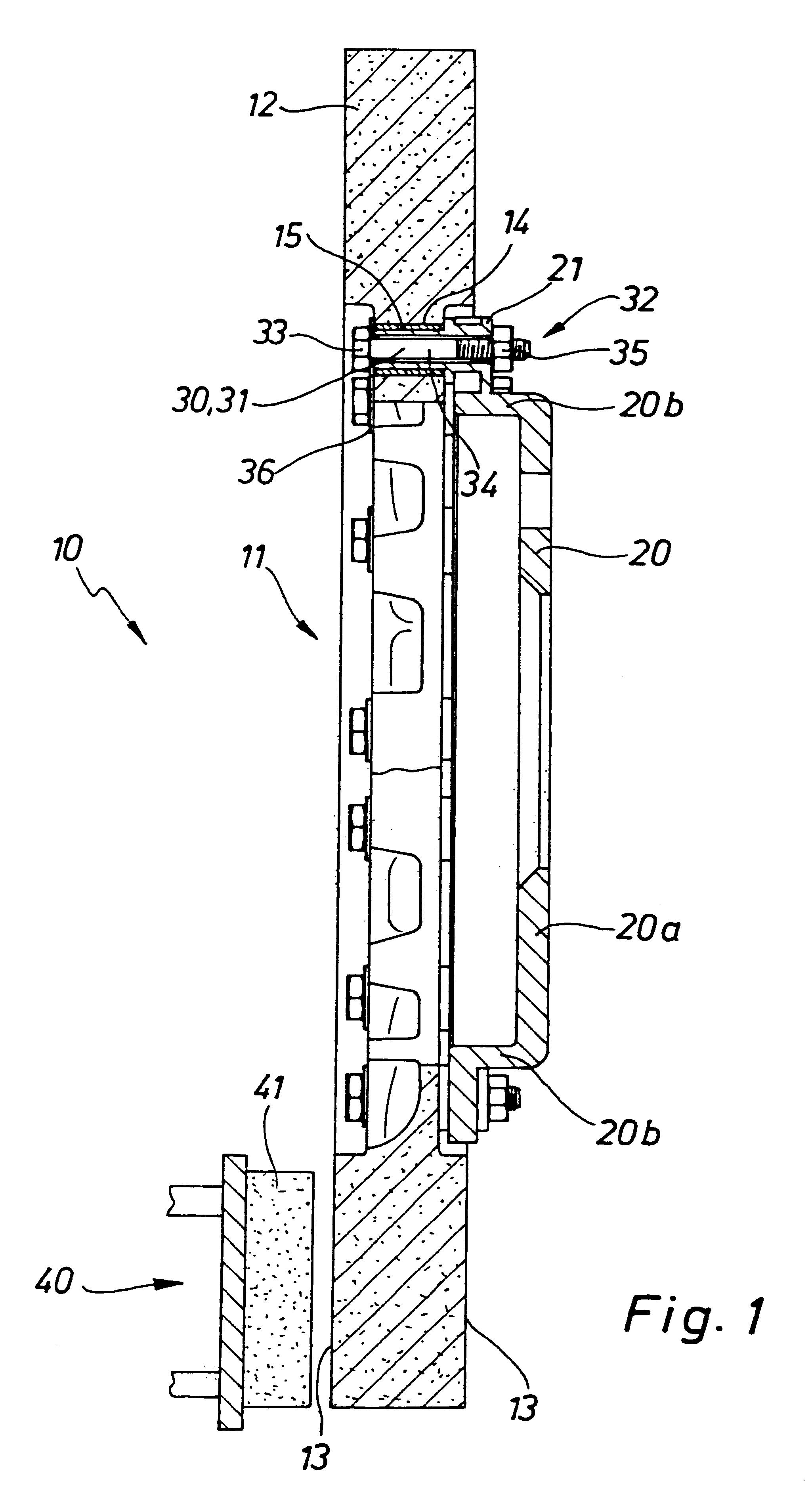Brake unit
a technology of brake units and brake discs, which is applied in the direction of brake discs, braking systems, transportation and packaging, etc., can solve the problems of reducing the smoothness of braking, and reducing the wear rate of conventional brake units
- Summary
- Abstract
- Description
- Claims
- Application Information
AI Technical Summary
Benefits of technology
Problems solved by technology
Method used
Image
Examples
Embodiment Construction
The drawing shows one embodiment of a brake unit 10 according to the present invention, made up of a disk brake 11 and brake pads 40 having friction linings 41. Disk brake 11 has a brake ring or brake rotor 12. The outer surfaces of brake rotor 12 serve as friction surfaces 13 for friction linings 40 of brake pads 41. At least friction surface 13, but preferably the entire brake unit 10, is made of a ceramic-metal composite material, in the exemplary embodiment having a composition with approximately 10 to 55 wt % silicon carbide, approximately 30 to 78 wt % carbon fibers or silicon carbide fibers that are preferably isotropically oriented short fibers, and approximately 0 to 25 wt % silicon. The hardness is in the range of, for example, from approximately 1600 to 2500 HV, per DIN 50133, and surface roughness Rx is approximately 2 to 15 .mu.m.
Mounted on disk brake 11 is an adapter or disk brake cup 20, preferably attached in the "floating" fashion shown in the Figure. Disk brake cup...
PUM
 Login to View More
Login to View More Abstract
Description
Claims
Application Information
 Login to View More
Login to View More - R&D
- Intellectual Property
- Life Sciences
- Materials
- Tech Scout
- Unparalleled Data Quality
- Higher Quality Content
- 60% Fewer Hallucinations
Browse by: Latest US Patents, China's latest patents, Technical Efficacy Thesaurus, Application Domain, Technology Topic, Popular Technical Reports.
© 2025 PatSnap. All rights reserved.Legal|Privacy policy|Modern Slavery Act Transparency Statement|Sitemap|About US| Contact US: help@patsnap.com


